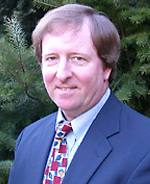Richard Bass
Professor Emeritus of Music Theory
Ph.D., University of Texas at Austin
M.M., Northern Illinois University
B.M., Georgia State University
Richard Bass holds degrees in piano performance from Georgia State University and Northern Illinois University, and a doctor of philosophy degree in music theory from the University of Texas at Austin. He also studied at the Aspen Music School and Indiana University, and he attended Yale University as a visiting Faculty Fellow. Before joining the faculty at the University of Connecticut in 1987, he held teaching appointments at institutions in Illinois, Texas, and Michigan.
As a pianist, Bass has performed extensively as a recitalist and in chamber ensembles and has appeared as soloist with a number of orchestras, including the Atlanta Symphony. His scholarly articles have been published in Music Analysis, Music Theory Spectrum, Journal of Music Theory, 19th Century Music, and numerous other journals, covering topics ranging from eighteenth-century to twentieth-century music. He has presented papers and lecture-recitals throughout the United States and in Europe and has written extensively on the music of American composer George Crumb. Bass is a former president of the New England Conference of Music Theorists, and has served as a member of the Publications Committee of the Society for Music Theory and on the editorial board for the journal Music Theory Spectrum. He was a founding core member of the UConn Digital Musicology Group (2013-16), using micro-computed tomography and 3-D printing to study, replicate, and restore antique wind instrument parts (see a video at s.uconn.edu/instruments). His most recent research focuses on aspects of harmonic practice in music of the late-nineteenth century.
At UConn, Dr. Bass has supervised a large number of graduate theses and dissertations, and he served as Director of Graduate Studies in Music for 19 years. His former students hold teaching positions in colleges and universities throughout the United States, and his undergraduate advisees have gone on to pursue graduate study at other major universities. In 2013-17 he was a member of the Executive Committee of the Graduate School and also served as Moderator for the Graduate Faculty Council.
Publications and Patent
“八声音阶与全音阶相互作用的模式——乔治·克拉姆与其前辈在音高结构思维方面的传承关系”,王瑛珏译,郭新校。Translated by Yingjue Wang, edited by Xin Guo. Journal of the Xinghai Conservatory of Music 3 (2018): 145-167.
Online version
“Harmony and Key Relationships in Romantic Music.” In A-R Online Music Anthology (2017).
Available at: http://armusicanthology.com/
United States Patent No. US 9,818,383 B2, “Methods and Systems for Non-Destructive Analysis of Objects and Production of Replica Objects.” With Robert Howe and Sina Shahbazmohamadi. Awarded November 14, 2017.
“Types and Applications of P3,0 Seventh-Chord Transformations in Late Nineteenth-Century Music.” With Samuel Reenan. Music Theory Online 22.2 (June 2016).
“Digital Evaluation and Replication of Period Wind Instruments: The Role of Micro-Computed Tomography and Additive Manufacturing.” With Robert Howe, Sina Shahbazmohamadi, and Prabhakar Singh. Early Music 42/2 (November 2014), 429-36.
“Harmonic Text-Painting in Franz Liszt’s Lieder.” With Heather de Savage and Patricia Grimm. Gamut: Online Journal of the Music Theory Society of the Mid-Atlantic: Vol. 6: Iss. 1, Article 2 (2013).
Available at: http://trace.tennessee.edu/gamut/vol6/iss1/2
“Enharmonic Position Finding and the Resolution of Seventh Chords in Chromatic Music.” Music Theory Spectrum 29/1 (2007): 73-100.
“The Case of the Silent G: Pitch Structure and Proportions in the Theme of George Crumb’s Gnomic Variations.” In George Crumb and the Alchemy of Sound, pp. 157-170. Edited by Steven Bruns and Ofer Ben-Amots. Colorado Springs: Colorado College Music Press, 2005.
Review of David Kopp, Chromatic Transformations in Nineteenth-Century Music. Music Theory Online 10.1 (February 2004).
“‘Approach Strong Deliveress!’ from George Crumb’s Apparition: A Case Study in Analysis and Performance of Post-Tonal Music.” Journal of Music Theory Pedagogy 16 (2002): 57-77.
“Half-Diminished Functions and Transformations in Late Romantic Music.” Music Theory Spectrum 23/1 (2001):41-60.
“De Gretchen a Tristán: el papel cambiante de las progresiones armónicas en el siglo XIX.” Translated by Paul S. McLaney. Quodlibet 15 (1999):17-45.
Review of Kent Williams, Theories and Analyses of Twentieth-Century Music. Journal of Music Theory Pedagogy 11 (1997).
“From Gretchen to Tristan: The Changing Role of Harmonic Sequences in the Nineteenth Century.” 19th Century Music19/3 (1996): 263-285.
“Octatonic and Whole-Tone Interaction: George Crumb and His Predecessors.” Journal of Music Theory 38/2 (1994):155-186.
“Liszt’s Un sospiro: An Experiment in Symmetrical Octave-Partitions.” Journal of the American Liszt Society 32 (1992):16-37.
“Sets, Scales and Symmetries: The Pitch-Structural Basis of George Crumb’s Makrokosmos I and II.” Music Theory Spectrum 13/1 (1991):1-20.
“The Second-Theme Problem and Other Issues in Mozart’s Sonata K. 457.” Indiana Theory Review 9/1 (1988):3-21.
“Prokofiev’s Technique of Chromatic Displacement.” Music Analysis 7/2 (1988):197-214.
“The Opening Section of Mozart’s Fantasy K. 475: Unity through Linear-Harmonic Elaboration.” Indiana Theory Review 8/2(1987):67-77.
“Pitch Structure in George Crumb’s Makrokosmos, Volumes I and II” (Ph.D. diss., the University of Texas at Austin, 1987). University Microfilms International, Publication No. 8717365.
“A New Challenge for New Music” (Feature Article). Living Music 3/1 (1985).
“Reviews.” Piano Guild Notes 36/3 (1986). 35/4 (1986). 35/1 (1985). 34/4 (1985). 34/1 (1984). 33/4 (1984). 33/1 (1983). 32/5 (1983). 32/4 (1983). 32/2 (1982). 31/5 (1982). 31/1 (1981).
“Recording the Piano.” Piano Guild Notes 30/1 (1981).
